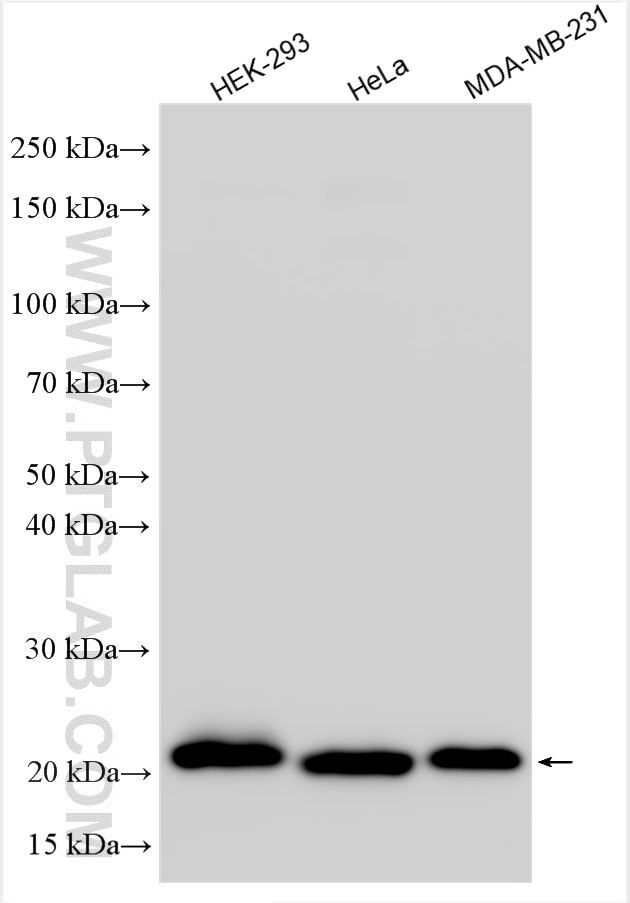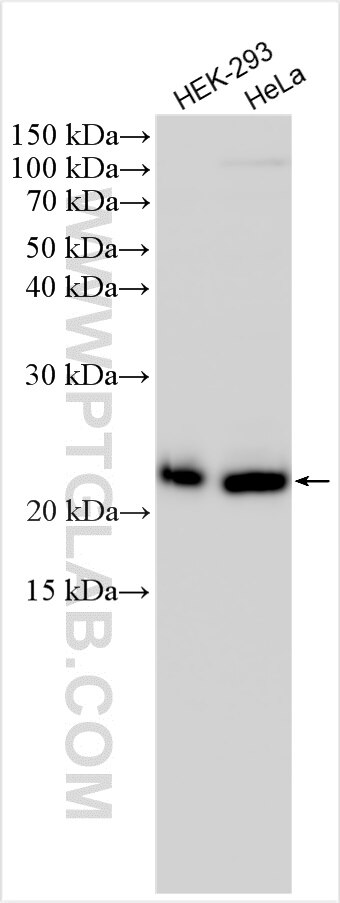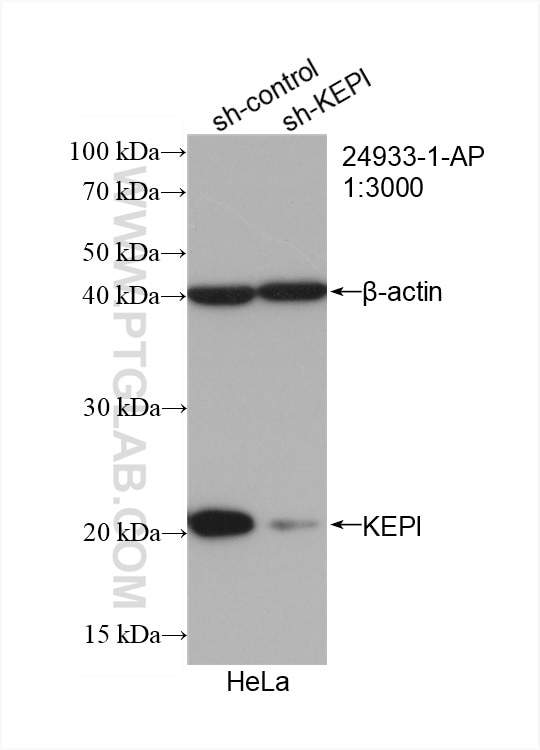Tested Applications
| Positive WB detected in | HEK-293 cells, HeLa cells, MDA-MB-231 cells |
Recommended dilution
| Application | Dilution |
|---|---|
| Western Blot (WB) | WB : 1:500-1:3000 |
| It is recommended that this reagent should be titrated in each testing system to obtain optimal results. | |
| Sample-dependent, Check data in validation data gallery. | |
Product Information
24933-1-AP targets KEPI in WB, ELISA applications and shows reactivity with human samples.
| Tested Reactivity | human |
| Host / Isotype | Rabbit / IgG |
| Class | Polyclonal |
| Type | Antibody |
| Immunogen | KEPI fusion protein Ag20645 Predict reactive species |
| Full Name | protein phosphatase 1, regulatory (inhibitor) subunit 14C |
| Calculated Molecular Weight | 18 kDa |
| Observed Molecular Weight | 20-22 kDa |
| GenBank Accession Number | BC015773 |
| Gene Symbol | PPP1R14C |
| Gene ID (NCBI) | 81706 |
| RRID | AB_3085762 |
| Conjugate | Unconjugated |
| Form | Liquid |
| Purification Method | Antigen affinity purification |
| UNIPROT ID | Q8TAE6 |
| Storage Buffer | PBS with 0.02% sodium azide and 50% glycerol , pH 7.3 |
| Storage Conditions | Store at -20°C. Stable for one year after shipment. Aliquoting is unnecessary for -20oC storage. 20ul sizes contain 0.1% BSA. |
Background Information
PPP1R14C, found as a morphine‐regulated brain gene, encodes protein phosphatase 1 regulatory inhibitor subunit 14C, and is identified as a potent inhibitor of PP1. Horvath and colleagues reported that PPP1R14C inhibited the release of neurotransmitters and promoted neuronal exocytosis by retaining synaptosome associated protein 25 (SNAP25) at a phosphorylated state. Moreover, overexpression of PPP1R14C increased the phosphorylation of RB transcriptional co‐repressor 1 (RB1) to protect leukemic cells from chemotherapy.
Protocols
| Product Specific Protocols | |
|---|---|
| WB protocol for KEPI antibody 24933-1-AP | Download protocol |
| Standard Protocols | |
|---|---|
| Click here to view our Standard Protocols |







